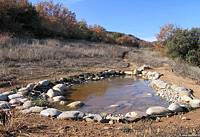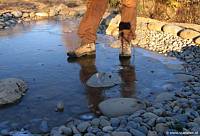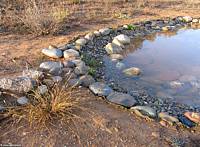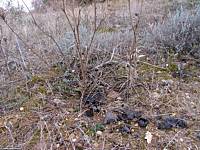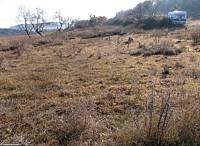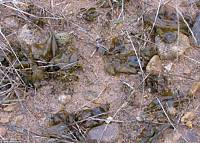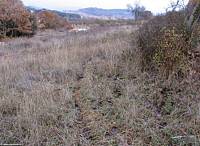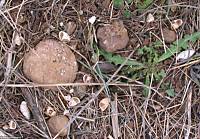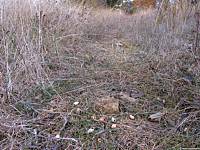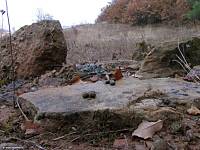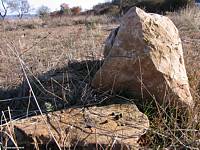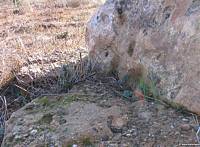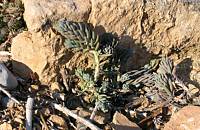|
|
Nature
Switched On
|
|
|
introduction |
2007 December 1 & 2, Saturday & Sunday On Saturday morning there was still
a fine layer of ice on the
Little by little the shore is invaded by green spots, especially on the inside of the pond where the plants haven't suffered from the very dry autumn this year. |
The pond with a thin sheet of ice. |
|
Two weeks ago: the ice was strong enough to
support the photographer. |
Edge of the pond with some tussocks of Bromus
diandrus and Setaria pumila. |
|
|
Fortunately it had rained quite heavily some days ago and although
the vegetation still looked quite dead and dry (partly from the
frost), some organisms had clearly taken advantage of the moist.
Scattered over the
terrain I found many mushrooms of Astraeus hygrometricus
whose 'stars' had exploded
after absorbing the rain water. |
||
|
Overview of the lower northern terrace, looking
south_east. |
Astraeus hygrometricus
on the higher central terrace in the company of Wild carrot and
Common thyme. Saturday 15:15 |
|
|
Unidentified Lying Blanket. Saturday 15:13 |
||
|
On many places were the remains of the slaughtering of snails. The poor creatures were smashed on anvils of stone, a typical method of thrushes but not a bird that I have often seen on the terrain.
|
||
|
This trail seems to go directly to the pond. |
||
|
More than 20 of these anvils could be found all
over the terrain. |
On the path along the middle
terrace. Saturday 15:48 |
|
|
|
||
|
Hare droppings on a stonegroup on the higher
western terrace. |
||
|
Hare droppings on a stonegroup on the lower
northern terrace. |
Incrusted droppings in the stonegroup on the lower northern
terrace. |
|
|
Insect life is on a low level on these frosty days and I was quite
surp The
photograph shows a somewhat beaten Pale Stonecrop (Sedum
sediforme). I suppose that some animal has been picking on them,
in the meantime helping the spread of this succulent because the
broken off pieces root with a remarkable facility. |
||
|
About 15 Firebugs on Pale Stonecrop in
the stonegroup on the lower northern terrace. Saturday 14:17 |
||
|
introduction
|
|
